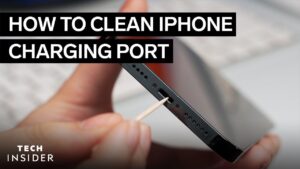Looking for the best way to store NiMH batteries? We’ve got you covered! Proper storage is crucial to ensure your batteries remain in optimal condition and have a longer lifespan. In this article, we’ll walk you through the simple steps on how to store NiMH batteries effectively. From understanding the ideal storage temperature to using the right storage containers, you’ll learn everything you need to know to keep your batteries safe and ready to power up whenever you need them. So, let’s dive in and discover the proper way to store NiMH batteries!
How to Store NiMH Batteries
When it comes to storing NiMH (Nickel Metal Hydride) batteries, proper care is essential to ensure their longevity and optimal performance. In this comprehensive guide, we will explore the best practices and important considerations to keep in mind while storing NiMH batteries. From understanding the lifespan of NiMH batteries to effective storage methods, we’ve got you covered. Read on to learn how to store NiMH batteries correctly and extend their lifespan.
Understanding the Lifespan of NiMH Batteries
Before diving into the specifics of storing NiMH batteries, it’s vital to understand their typical lifespan. NiMH batteries are rechargeable and generally have a lifespan of 2 to 5 years or approximately 300 to 500 charge cycles. However, this lifespan can vary depending on several factors, including usage patterns, charging practices, and storage conditions.
Properly storing NiMH batteries when they are not in use is crucial to extend their lifespan. Let’s now explore the key factors to consider when storing your NiMH batteries for long periods.
Factors to Consider When Storing NiMH Batteries
To ensure the longevity and performance of your NiMH batteries while in storage, pay attention to the following factors:
Temperature:
NiMH batteries should be stored in a cool, dry place, preferably at temperatures between 59°F (15°C) and 77°F (25°C). Avoid exposing them to extreme heat or cold, as it can affect their performance and potentially reduce their lifespan.
Humidity:
Humidity can also impact the performance of NiMH batteries. Aim to store them in an environment with low humidity levels to prevent moisture buildup, which could damage the batteries or cause corrosion.
Avoid Direct Sunlight:
Direct sunlight can lead to overheating and damage the batteries. Keep them in a dark place or use opaque storage containers to shield them from light exposure.
Prevent Mechanical Damage:
Avoid dropping, crushing, or subjecting the batteries to any physical stress, as it can lead to internal damage and compromise their performance.
Charge Level:
Before storing NiMH batteries, ensure they are neither fully charged nor fully discharged. The ideal charge level for long-term storage is around 40% to 50%. This level helps prevent self-discharge while still avoiding overcharging, which can be detrimental to the battery’s lifespan.
Battery Contacts:
Clean the battery contacts before storage to remove any dirt or debris. This ensures good electrical connectivity and prevents potential issues when you retrieve the batteries for use.
Now that we have covered the key factors to consider let’s explore the best practices and methods for storing NiMH batteries effectively.
Best Practices for Storing NiMH Batteries
To maximize the lifespan and performance of your NiMH batteries during storage, follow these best practices:
Remove Batteries from Devices:
If you have NiMH batteries installed in devices that are not in regular use, such as remote controls or backup equipment, it’s advisable to remove the batteries before storage. This prevents any potential discharge or internal corrosion caused by lingering electrical connections.
Store in a Battery Case:
Invest in a dedicated battery case or holder to store your NiMH batteries. These cases provide a safe and organized way to store batteries, minimizing the risk of short circuits or physical damage.
Avoid Metal Containers:
While it may be tempting to use metal containers for storage, such as tin cans, it is best to avoid them. Metal containers can cause short circuits if the battery terminals come into contact with the container’s inner surface. Stick to plastic or non-conductive material for storage.
Separate Charged and Discharged Batteries:
If you have both charged and discharged NiMH batteries to store, keep them separated. Mixing them can lead to self-discharge, potential chemical reactions, and reduced overall battery performance.
Label and Organize:
Label your NiMH batteries with the purchase or recharge date to keep track of their age. Additionally, organize them by charge level or size to easily identify which batteries are ready for use.
Check and Refresh:
Regularly check the stored NiMH batteries every 3 to 6 months. If their charge level has dropped significantly, give them a refresh charge to maintain their optimal charge levels.
Recharge Before Use:
Before putting your stored NiMH batteries back into use, it is advisable to recharge them fully. This ensures they are at their maximum potential and provides optimal performance.
Summary
Properly storing NiMH batteries is crucial to maintain their longevity and optimal performance. By considering factors such as temperature, humidity, and charge level, you can extend the lifespan of your batteries significantly. Remember to store them in a cool, dry place, away from direct sunlight, and avoid subjecting them to mechanical damage.
Follow best practices such as removing batteries from devices before storage, using dedicated battery cases, and organizing them by charge level. Regularly check and refresh your stored NiMH batteries to ensure they maintain their optimal charge levels. Following these guidelines will help you store your NiMH batteries properly and maximize their lifespan.
Remember, taking care of your batteries not only saves you money in the long run but also contributes to a more sustainable and eco-friendly approach to energy consumption. So, let’s store our NiMH batteries with care and make the most out of their rechargeable capabilities.
Frequently Asked Questions
How should I store NiMH batteries?
When storing NiMH batteries, it is important to follow these recommendations:
Should I fully charge or discharge NiMH batteries before storage?
It is generally recommended to store NiMH batteries with a partial charge rather than fully charged or completely discharged. Aim for a charge level between 40% and 70% for optimal storage.
What is the best temperature for storing NiMH batteries?
NiMH batteries should be stored at room temperature, ideally between 20°C (68°F) and 25°C (77°F). Avoid exposing them to extreme temperatures, as this can affect their performance and overall longevity.
How can I protect NiMH batteries from physical damage during storage?
To protect NiMH batteries from physical damage, store them in a dedicated battery case or container. This will shield them from potential impacts, moisture, and other external factors that may lead to damage.
Can I store NiMH batteries for an extended period of time?
Yes, NiMH batteries can be stored for extended periods of time. However, it is important to check their charge level every three to six months and recharge them as necessary to prevent over-discharge, which can lead to reduced capacity or even irreversible damage.
Should I remove NiMH batteries from devices when not in use?
If you plan to store devices for a prolonged period without use, it is generally recommended to remove the NiMH batteries. This ensures that any potential drain from the device does not compromise the batteries’ performance or lead to over-discharge.
Final Thoughts
In conclusion, storing NiMH batteries properly ensures their longevity and performance. When storing NiMH batteries, it is important to keep them in a cool and dry place, away from direct sunlight or extreme temperatures. It is also advisable to avoid storing them in completely discharged or fully charged states. Instead, aim for a 40-60% charge level for long-term storage. Additionally, storing NiMH batteries separately and in a secure container can prevent short circuits and accidental damage. By following these guidelines, you can effectively store NiMH batteries and ensure their optimal performance whenever you need them.



